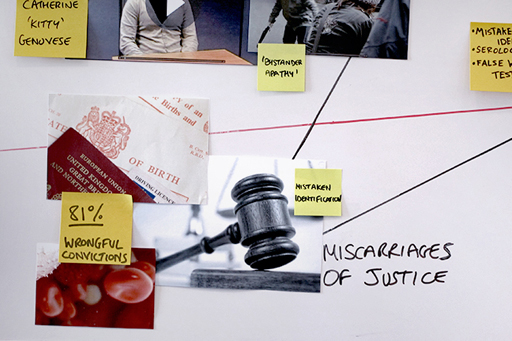2.2 Miscarriages of justice
The data used in the previous activity was based on analysis of 74 cases where the original person convicted of the crime was later exonerated. Later research conducted by the Innocence Project, and based on 225 exonerations, revealed a similar pattern of results, with eyewitness misidentification remaining the leading cause of wrongful convictions, featuring in over 75% of cases. This analysis also showed that forensic science featured in 23% of the wrongful convictions. It is common for crime dramas to portray forensic science as being completely accurate and reliable, but often the techniques they show owe more to science fiction than they do science fact.
In reality, the accuracy and reliability of forensic science varies greatly according to the particular technique in question. In addition, a great deal of forensic science is reliant on the interpretation and judgements made by a human expert, which can lead to mistakes being made.
A study conducted on fingerprint analysis found that most fingerprint experts would change their decision about whether a latent print was a positive match based on whether other information about the crime suggested the person was guilty or not (Dror and Charlton, 2006). This suggests even forensic evidence such as fingerprint analysis can be prone to human error and may not be as reliable as we think.
For example, in 2004, following fingerprint analysis conducted by several of their experts, the FBI arrested Brandon Mayfield, a US citizen and recent convert to Islam, in connection with the bombings at Alcala de Henares station outside of Madrid (which killed 191 people). Two weeks later Mayfield was released when Spanish police made a positive match between the same fingerprints and another suspect, a match the FBI confirmed as correct.
DNA analysis is a robust technique based on sound scientific principles, but even it can fall foul of human error. For 16 years, German police chased an elusive female serial killer known as ‘the Phantom of Heilbronn’, as the same female DNA was found at 40 crime scenes, including six murders. It was eventually discovered that the cotton swabs used to collect the samples of DNA had been contaminated by a woman working at the factory making the swabs, and that the crimes were not linked at all! If you want to find out more about this case, have a look at ‘DNA bungle’ haunts German police via BBC News.

